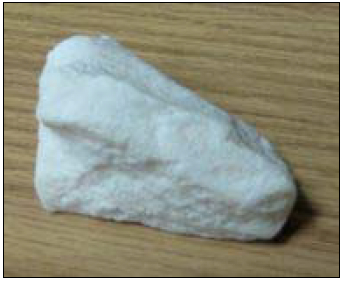Difference between revisions of "Chemical Coagulants"
(→Construction, operations and maintenance) |
(→Construction, operations and maintenance) |
||
| Line 20: | Line 20: | ||
'''Estimated Lifespan'''<br> | '''Estimated Lifespan'''<br> | ||
6 months in liquid form and 1 year in solid form. | 6 months in liquid form and 1 year in solid form. | ||
| + | |||
| + | '''Local Production:'''<br> | ||
| + | * Most chemical products are difficult and complex to manufacture and local production is not feasible. | ||
| + | |||
| + | '''Maintenance'''<br> | ||
| + | * Chemicals should be stored in a dry location and away from children. | ||
==Costs== | ==Costs== | ||
Revision as of 03:22, 11 July 2012
| |
The sedimentation process can be quickened by adding coagulants to the water. Chemical coagulants are commonly used in community drinking water treatment systems though some application in household water treatment occurs. The main chemicals used for coagulation are aluminium sulphate (alum), polyaluminium chloride (also known as PAC or liquid alum), alum potash, and iron salts (ferric sulphate or ferric chloride). Lime (Ca(OH2)), lime soda ash (Na2CO3) and caustic soda (NaOH) are sometimes used to "soften" water, usually ground water, by precipitating calcium, magnesium, iron, manganese and other minerals that contribute to hardness.
How Does it Remove Contamination?
Particles that cause turbidity (e.g. silt, clay) are generally negatively charged, making it difficult for them to clump together because of electrostatic repulsion. But coagulant particles are positively charged, and they chemically attracted to the negative turbidity particles, neutralizing the latter’s negative charge. With mixing the neutralized particles then accumulate (flocculation) to form larger particles (flocs) which settle faster. The flocs can then be settled out or removed by filtration.
Some bacteria and viruses can also attach themselves to the suspended particles in water that cause turbidity. Therefore, reducing turbidity levels through coagulation may also improve the microbiological quality of water.
Contents
Suitable conditions
Construction, operations and maintenance
Users follow the manufacturer’s instructions and add the prepared dose of coagulant to the water. The water is then stirred for a few minutes to help create flocs. The flocs can be settled out or removed by filtration.
- Maximum effectiveness requires careful control of coagulant dose, pH and consideration of the quality of the water being treated, as well as mixing
- Effectiveness of chemical coagulants varies from one to another
Estimated Lifespan
6 months in liquid form and 1 year in solid form.
Local Production:
- Most chemical products are difficult and complex to manufacture and local production is not feasible.
Maintenance
- Chemicals should be stored in a dry location and away from children.
Costs
| Capital Cost | Operating Cost | Replacement Cost |
|---|---|---|
| US$0 | US$9-91/year1 | US$0 |

